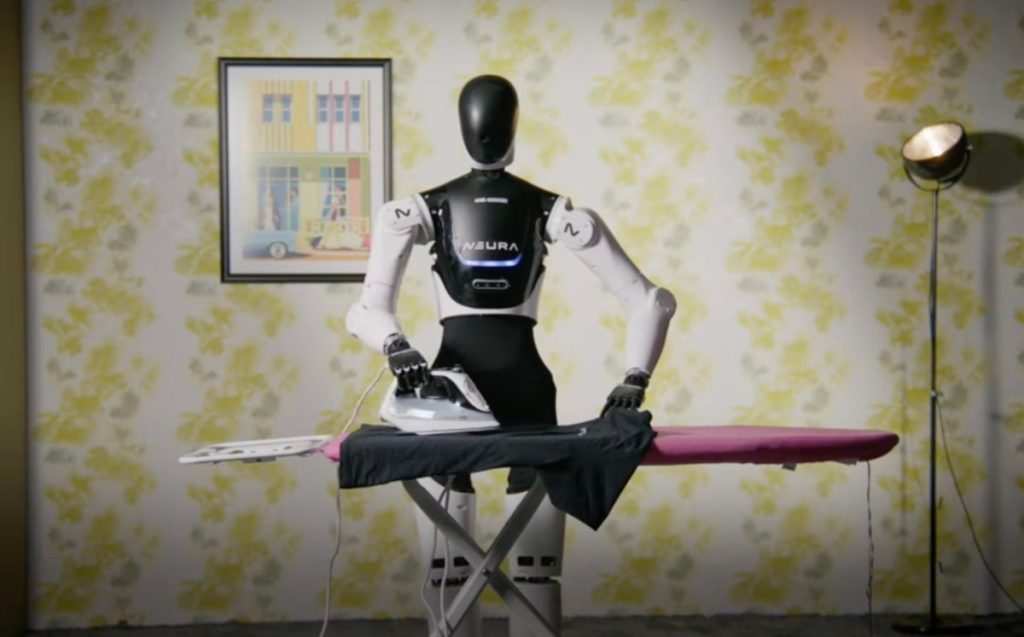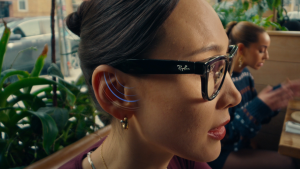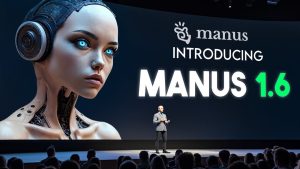Neura unveils its humanoid robot 4NE-1

This week, Neura released a compelling video showcasing its Humanoid robot, 4NE-1. The robot was seen performing various tasks such as ironing and moving boxes. The release coincides with Nvidia’s presentation of new tools for humanoid robots at the Siggraph conference.
Early Development and Teasers
Neura has been teasing the release of the 4NE-1 for some time. Initially, the project appeared to be in the early stages, as the company focused on traditional industrial robots. Neura’s CEO, David Reger, promised a closer look at 4NE-1 during a robot panel at the Automate event. However, the robots displayed there were non-functional, serving more as photo opportunities for attendees.
Video Showcase
The new video of 4NE-1 shows the robot performing more tasks than other humanoids, according to the company. However, it’s essential to remember that such videos often include short shots and commercial edits. These presentations might not fully represent the robot’s actual capabilities. Nevertheless, Neura uses the video to announce its partnership with Nvidia’s robotics portfolio.
The video uses simulation to test and train the robot. It includes shots of 4NE-1 in real-world scenarios. While these demonstrations are impressive, it’s crucial to see robots perform repeatable tasks in real-world environments. Until then, these videos should be viewed with some skepticism.
Industry Impact
Neura’s partnership with Nvidia opens up significant opportunities in robotics. Nvidia’s commitment to humanoids is a strong vote of confidence for this emerging sector. This partnership aims to accelerate development and attract new entrants. Several firms, including Boston Dynamics and 1X, were given early access to Nvidia’s humanoid tools.
Nvidia CEO Jensen Huang commented, “The next wave of AI is robotics, and one of the most exciting developments is humanoid robots.” His words highlight the growing importance of these robots in AI advancements.
Skepticism and Real-World Applications
While the video is exciting, it’s important to approach it with a degree of skepticism. Real-world applications of humanoid robots are still in pilot stages for most companies, except for some like Agility, partnered with logistics giant GXO. Even here, large-scale deployment is still a distant goal.
The robotics industry needs more raw footage of humanoids performing real-world tasks. This footage would help validate the capabilities of robots like 4NE-1. Until then, such promotional videos might not provide a complete picture of what these robots can achieve.
Technological Advancements
Nvidia’s advanced computing power and simulation platforms play a crucial role in propelling humanoid robotics forward. By integrating these technologies with Neura’s innovative solutions, the development of humanoid robots like 4NE-1 will likely accelerate.
Besides, Nvidia’s tools help in the detailed simulation of robotic tasks, which is crucial for developing reliable and efficient robots. This combination enhances both the technological and practical aspects of creating humanoid robots.
Future Prospects
In the near future, we can expect more iterations and improvements in humanoid robots thanks to collaborations like that of Neura and Nvidia. As technologies evolve, these robots could become more capable and widely accepted.
Nvidia’s commitment and resources provide a robust foundation for future innovations in humanoid robotics. This partnership aims to push the boundaries and explore new possibilities in the field.
Conclusion
Neura’s latest video of 4NE-1 demonstrates significant progress in humanoid robotics. The partnership with Nvidia highlights the immense potential and rapid advancements being made in this field.
Neura’s 4NE-1 showcases promising advancements in humanoid robotics. However, it is essential to remain cautiously optimistic until these technologies can be proven at scale in real-world applications.
Partnerships, like that between Neura and Nvidia, are vital for pushing the boundaries of what’s possible in robotics. These collaborations pave the way for the future of humanoid robots, making it an exciting field to watch.





